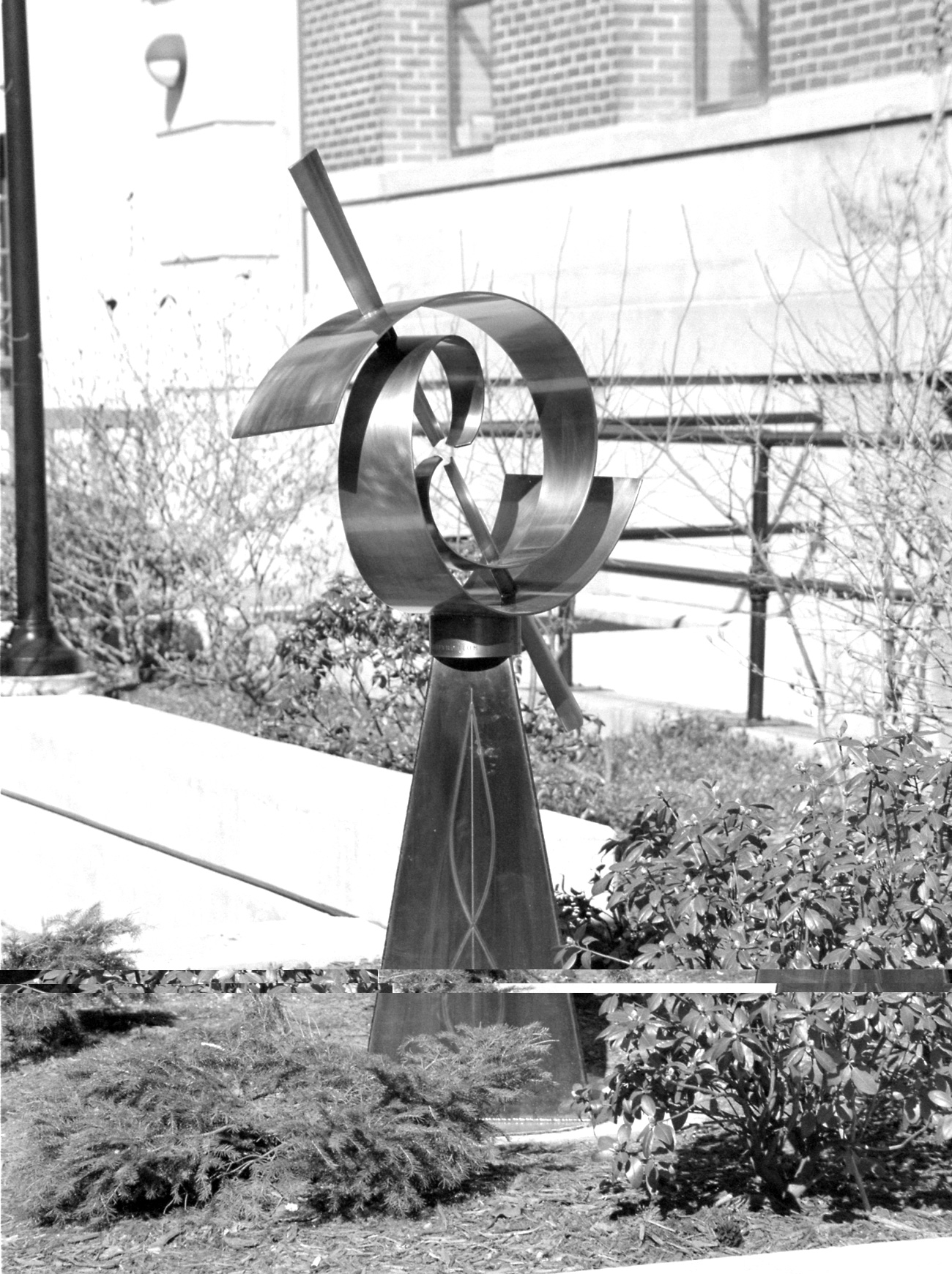The University Record, April 12, 1999
From the Department of Physics

“The Short, Rich Life of Positronium,” a sculpture by physics Prof. Jens Zorn, commemorates the fundamental research on antimatter done at the U-M by Arthur Rich (1937-90) and his students and colleagues.
The work “provides a permanent, visual remeinder that sciences at U-M have made and continue to make important discoveries,” Zorn says. “In this instance, the celebration is of discoveries regarding antimatter that enable contemporary scientists, engineers and physicians to make everyday use of antimatter in ways that would have been regarded as impossibly exotic only a few decades ago.”
Zorn notes that while the sculpture has an abstract quality for the general viewer, “those familiar with the relevant science can recognize it as a stylized expression of the creation and destruction of the simplest atom of antimatter.”
Positrons and electrons are antiparticles that are strongly attracted to one another. Electrons are a common constituent of ordinary matter, while positrons are created only under special circumstances of atomic and nuclear interactions.
Once created, the positron inevitably finds itself in a region where there are many electrons, and a typical fate for the positron is to couple with one of these electrons in a mutually encircling, ever-decreasing orbit. This two-body system is called “positronium” and resembles an ordinary atom in many ways.
During its short lifetime (only a few millionths of a second), positronium emits light as its orbit shrinks. Finally, the positron and electron annihilate one another as they convert to two high energy gamma rays in the purest known example of Einstein’s famous relationship of mass to energy: E=mc2.
Zorn says that U-M physicists, initially Rich and later Rich with David Gidley and their students, have studied the formation and annihilation of positronium since 1965. “Their results have provided stringent tests of quantum electrodynamics and the most exact theory of contemporary theoretical physics. Their experiments,” Zorn adds, “have shown ways of using antimatter to study both the surface and the interior of solids in non-destructive ways. Their work continues to help in finding new directions for the scientific, industrial and medical applications of positrons.”
Creation of the sculpture was made possible by the Department of Physics, University administration, and friends and family of Rich.
Zorn’s research focuses on atomic and molecular physics. He has done a variety of two-dimensional art while at the U-M, including photography and poster and book jacket designs. His sculpture has been in wire constructions, metal assemblies and brazed/welded constructions. “Positronium” is his first major sculpture on permanent public display.

